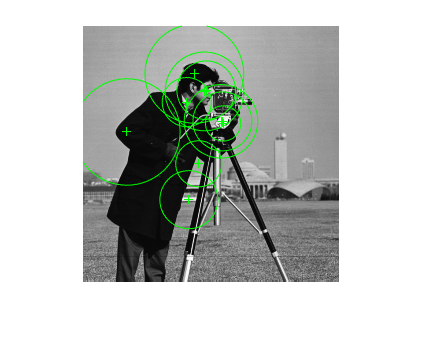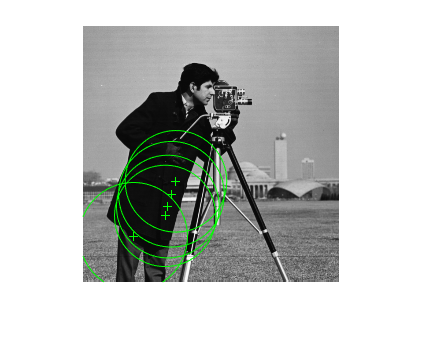KAZEPoints
Object for storing KAZE interest points
Description
This object provides the ability to pass data between the detectKAZEFeatures and extractFeatures functions. You can also use this object to manipulate
and plot the data returned by these functions. Use the object to fill points
interactively, where you might want to mix a non-KAZE interest point detector with a
KAZE descriptor.
Creation
Description
points = KAZEPoints(location)KAZEPoints object from an
M-by-2 array [x
y] of location coordinates.
The scalar KAZEPoints object contains many points. Therefore numel(KAZEPoints) always returns
1. This value can be different than the result of
length(KAZEPoints), which returns the true number of
points contained in the object.
points = KAZEPoints(location,Name=Value)points =
KAZEPoints(Metric=10) sets the strength of detected KAZE features
to 10.
Input Arguments
Name-Value Arguments
Properties
Object Functions
isempty | Determine if points object is empty |
length | Number of stored points |
plot | Plot points |
selectStrongest | Select points with strongest metrics |
size | Return size of points object |
selectUniform | Select uniformly distributed subset of point features |
select | Select point or region features during code generation |
Examples
Tips
Although
KAZEPointsmay hold many points, it is a scalar object. Therefore,numel(points)always returns1. This value may differ from the resulting value oflength(points), which returns the true number of points held by the object.
Extended Capabilities
Version History
Introduced in R2017b
See Also
Functions
detectKAZEFeatures|detectBRISKFeatures|detectFASTFeatures|detectMSERFeatures|detectMinEigenFeatures|detectHarrisFeatures|matchFeatures|extractFeatures|detectSURFFeatures

